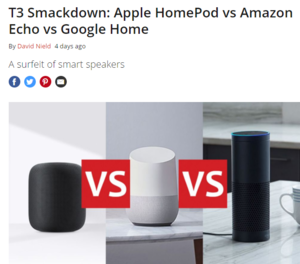
Press Release:
![thunderbolt-logo[1] thunderbolt-logo[1]](http://bobstechtalk.com/resource/Windows-Live-Writer-Thunderbolt-Technology-Intels-new-high-s_ECCD-?fileId=10942083) Intel Corporation today announced the availability of Thunderbolt technology, a new high-speed PC connection technology that brings together high-speed data transfer and high-definition (HD) display on to a single cable. Running at 10 Gbps, Thunderbolt technology can transfer a full-length HD movie in less than 30 seconds. This Intel-developed technology is coming to market through a technical collaboration with Apple, and is available first on Apple's new line of MacBook Pro laptop computers.
Intel Corporation today announced the availability of Thunderbolt technology, a new high-speed PC connection technology that brings together high-speed data transfer and high-definition (HD) display on to a single cable. Running at 10 Gbps, Thunderbolt technology can transfer a full-length HD movie in less than 30 seconds. This Intel-developed technology is coming to market through a technical collaboration with Apple, and is available first on Apple's new line of MacBook Pro laptop computers.
Thunderbolt technology formally known as Light Peak, is envisioned as a technology to move media faster between devices and simplify device connections. It will combine high=-speed data and HD video connections onto a single cable. Thunderbolt will be used to connect PCI Express for data transfer and DisplayPort for display systems.
PCI Express has the flexibility to connect to almost any type of device, and DisplayPort can drive greater than 1080p resolution displays and up to eight channels of audio simultaneously. Thunderbolt technology is compatible with existing DisplayPort displays and adapters. All Thunderbolt technology devices share a common connector, and let individuals simply daisy-chain their devices one after another, connected by electrical or optical cables.
What is Thunderbolt technology and how does it work
Developed by Intel (under the code name Light Peak), and brought to market with technical collaboration from Apple. Thunderbolt technology is a new, high-speed, dual-protocol I/O technology designed for performance, simplicity, and flexibility. This high-speed data transfer technology features the following:

- Dual-channel 10 Gbps per port
- Bi-directional
- Dual-protocol (PCI Express* and DisplayPort*)
- Compatible with existing DisplayPort devices
- Daisy-chained devices
- Electrical or optical cables
- Low latency with highly accurate time synchronization
- Uses native protocol software drivers
- Power over cable for bus-powered devices
Intel's Thunderbolt controllers interconnect a PC and other devices, transmitting and receiving packetized traffic for both PCIe and DisplayPort protocols. Thunderbolt technology works on data streams in both directions, at the same time, so users get the benefit of full bandwidth in both directions, over a single cable. With the two independent channels, a full 10 Gbps of bandwidth can be provided for the first device, as well as additional downstream devices.
And all Thunderbolt devices share a common connector, allowing users to daisy chain devices one after another with interoperable cables.
What Thunderbolt means to users
Thunderbolt technology enables using the thinnest and lightest laptops and connecting to the extra power and performance of other devices when needed, using a single cable. Adding new performance devices is simple and easy—just plug and play—making Thunderbolt technology powerful and flexible.
Thunderbolt technology was specifically designed with professional audio and video applications in mind, where the inherently low latency and highly accurate time synchronization features play a crucial role.

Workstation performance expansion, now with a laptop
With Thunderbolt enabled products, video editing and sharing using Intel® Quick Sync Video technology is even faster and easier.
Data transfers for backup, sharing, and editing are tremendously accelerated using Thunderbolt products, significantly reducing times to complete these tasks.
And Thunderbolt enabled products are compatible with existing DisplayPort devices so you don’t have to go buy a new display to take advantage of a Thunderbolt technology enabled computer.
What does Thunderbolt technology mean for the PC industry
By tapping into the performance and protocols delivered over Thunderbolt technology, designers are free to innovate new PC products and configurations, no longer constrained to the boundaries of the chassis walls. Thunderbolt technology enables engineers to:
- Design standalone performance expansion technologies commonly used in desktops and workstations, using existing native device drivers and interconnected by a single cable.
- Introduce thinner and lighter laptops, expandable through Thunderbolt technology and its miniature connector designed for mobile applications, without sacrificing I/O performance.
- Extend to reach other I/O technologies by using adapters that use widely available PCI Express controllers. It's simple to create a Gigabit Ethernet, or FireWire, or eSATA adapters using existing device PCI Express drivers.
Thunderbolt products require a controller chip supplied by Intel and a small connector that would be included in platforms supporting this technology. The Thunderbolt controller chip provides protocol switching capabilities to support the two protocols over a single cable. Intel is making its controller chip available to the industry, and is working with other component manufacturers to deliver the Thunderbolt connectors and cables.
 Friday, June 9, 2017 at 10:52AM
Friday, June 9, 2017 at 10:52AM  Here is a quick overview of the three major products that are in the market today, Apple (HomePod), Google (Google Home) or Amazon's (Amazon Echo). Which one of these out performs the other? What other considerations should you be thinking about? Take a look at this article and see if this helps you to decide.
Here is a quick overview of the three major products that are in the market today, Apple (HomePod), Google (Google Home) or Amazon's (Amazon Echo). Which one of these out performs the other? What other considerations should you be thinking about? Take a look at this article and see if this helps you to decide.












